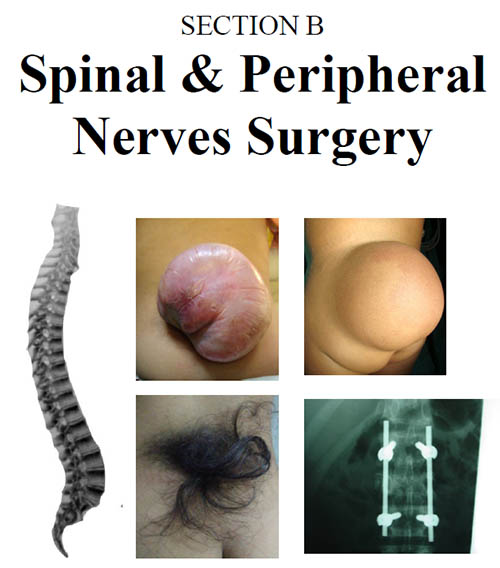Transaxillary Transthoracic Approach to Upper Dorsal Spine Lesions: An Anatomical Corridor with Muscle Preservation
DOI:
https://doi.org/10.36552/pjns.v24i1.412Keywords:
Transaxillary, transthoracic, upper thoracic, muscle preservation technique, causalgiaAbstract
Objective: Conventional methods for anterior upper dorsal spine are not devoid of intra-operative complications due to anatomical constraints, a major blood vessel and vital organs. We analyzed the details of Trans- axillary approach without muscle cutting in tuberculosis, tumor, and traumatic lesions of T2 to T6 and upper limb causalgia.
Materials and Methods: A prospective quasi-experimental study was conducted for 3 years included 30 patients presented with dorsal myelopathy due to D2 to D6 vertebral body involvement. Right and left sided approaches were utilized. Medical Research Council grading was used to assess neurological status.
Results: Mean age was 32 ± 15 years, which included male 18.60% and female 12.40%. T4 vertebrae were commonly involved. Others were T5, T3 and T6 respectively. The majority of lesions were tuberculosis of the spine (n = 14), tumor (n = 8), trauma (n = 5) and causalgia of upper limb (n = 3). No intra-operative complications occurred, estimated blood was 80-100 ml and operative time was 120-160 minutes. Postoperative complications included pneumonia (n = 1), superficial wound infection (n = 3), death (n = 1). Serial follow up was for 2 years, Patients were discharged with improved neurological status and causalgia patients got immediate post-operative relief.
Conclusions: Transaxillary approach is a unique anatomical corridor which is safe, feasible with promising results. It provides optimal decompression, reconstruction with better fixation and alignment in various pathologies of upper dorsal spine.
References
Lesoin F, Autricque A, Villette L, Jomin M. [Anterior approach to the upper dorsal spine (D1 to D4) by sternobiclavicular monoblock mobilization]. Neurochirurgie 1998; 32: 269-271.
Dighe MP, Balasubramaniam S, Nadkarni TD. Transthoracic approach for ventrally situated paraspinal extradural hydatid cyst of the dorsal spine. J Craniovertebr Junction Spine, 2018; 9: 271-273.
Freixinet J, Hussein M, Mhaidli H, Rodriguez Suarez P, Robaina F, Rodriguez de Castro F. [Transthoracic approach to the spinal column]. Arch Bronconeumol, 1998; 34: 492-495.
Grootboom MJ, Govender S.Acute injuries of the upper dorsal spine. Injury, 1993; 24: 389-392.
Hernigou P, Kooli M, Fevrier MJ, Goutallier D. [Anterior approach to the high thoracic spine by the subscapular route]. Rev Chir Orthop Reparatrice Appar Mot. 1991; 77: 353-358.

Downloads
Published
Issue
Section
License
The work published by PJNS is licensed under a Creative Commons Attribution-NonCommercial 4.0 International (CC BY-NC 4.0). Copyrights on any open access article published by Pakistan Journal of Neurological Surgery are retained by the author(s).












